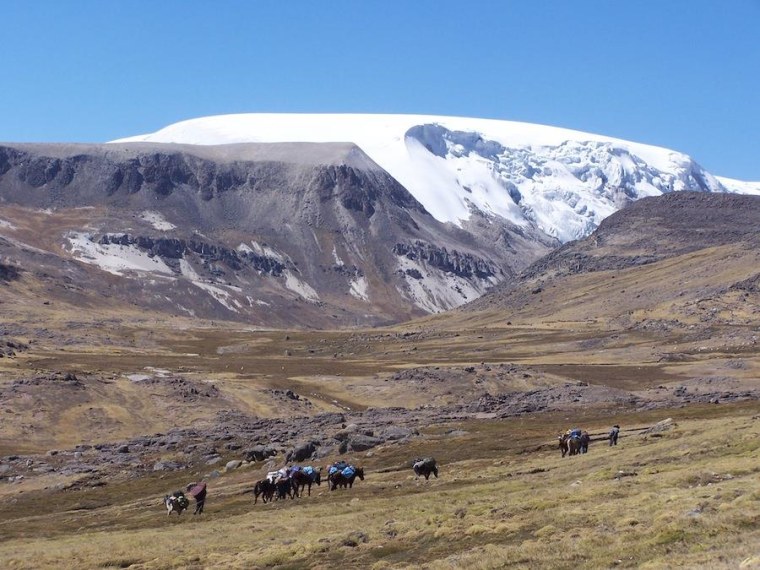Traces of air pollution from 16th-century Spanish silver mines were discovered deep inside an ice cap in the Peruvian Andes, scientists announced Monday.
Though the imprint of metal-rich smog was discovered in Peru, the pollution likely originated hundreds of miles away, in what is now Bolivia, at the Potosí mountaintop silver mines. [Images: One-of-a-Kind Places on Earth]
At an altitude of about 13,120 feet (4,000 meters), Potosí is designated a UNESCO World Heritage site because of its rich industrial history. The Inca people had been extracting and refining silver from Potosí for generations before the Spanish arrived. But during the colonial period, mining activity boomed, and Potosí became known as the largest source of silver in the world. By the 17th century, about 160,000 colonists lived in Potosí alongside about 13,500 indigenous people who were forced to work the mines under a system of mandatory labor, according to UNESCO. [See Photos of New UNESCO World Heritage Sites]

The success of the mines depended largely on amalgamation, a new technology that the Spanish introduced in 1572 to speed up silver production. That refining process involved grinding lead-rich silver ore into a powder and mixing it with mercury.
Thick clouds of lead-laden dust were probably released into the atmosphere during milling. Some of that pollution was apparently swept 500 miles (800 kilometers) northwest, where it settled on the Quelccaya Ice Cap in the Andes Mountains in southern Peru.
In 2003, researchers pulled a long ice core from the Quelccaya Ice Cap to study the climatic changes in South America during the past 2,000 years. They did not see a section of the ice core from the colonial era that was stained with soot; the ice actually looks translucent white. But a chemical analysis revealed that just before 1600, the Quelccaya started catching much larger quantities of metals, especially lead. This pollution persisted until the early 1800s, when the mining industry stagnated during the Latin American Wars of Independence, the researchers said.
The colonial-era level of pollution was still several times lower than the level of pollution during the 20th century — when people performed mining operations in huge open pits and when fossil fuel combustion changed the South American atmosphere more dramatically, said Paolo Gabrielli, a research scientist at the Byrd Polar and Climate Research Center at Ohio State University.
Gabrielli and his colleagues published their findings in the Proceedings of the National Academy of Sciences.
— Megan Gannon, LiveScience
This is a condensed version of a report from LiveScience. Read the full report. Follow Megan Gannon on Twitter. Follow LiveScience on Twitter, Facebook andGoogle+.